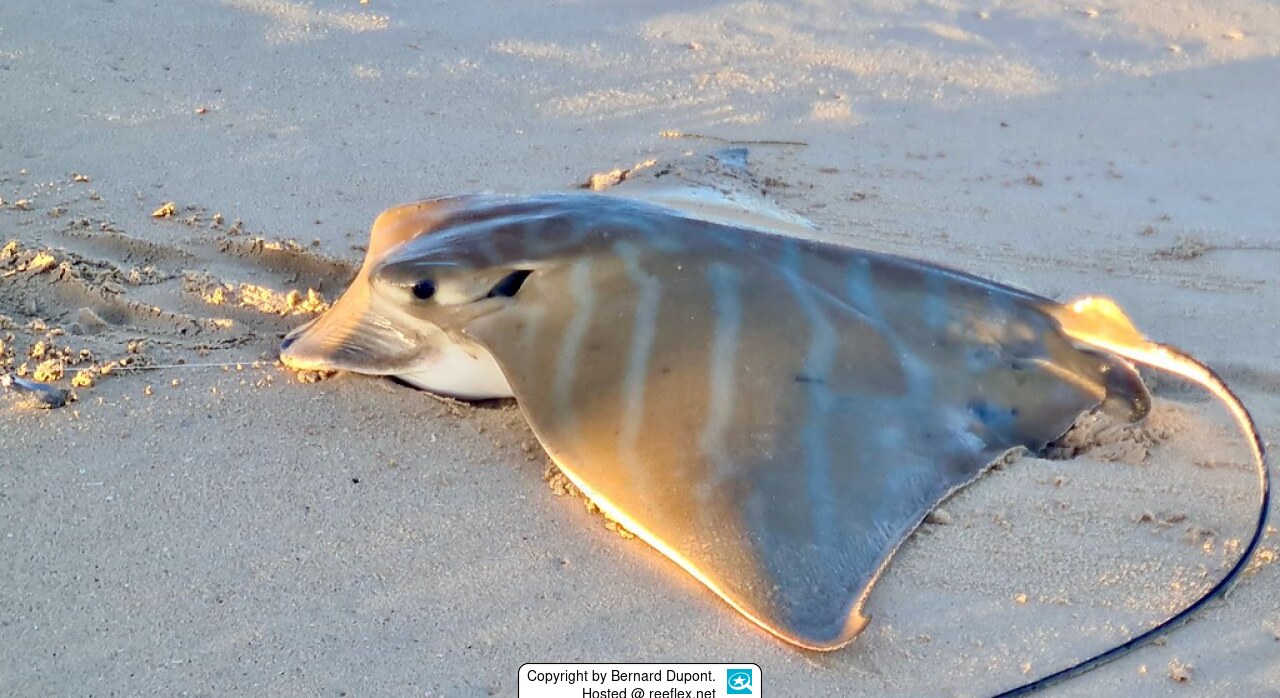Info
Aetomylaeus bovinus (Geoffroy Saint-Hilaire, 1817)
Distribution
Eastern Atlantic: Portugal and Morocco to Angola, including the Mediterranean, Madeira and the Canary Islands; then from Saldanha Bay to Natal (South Africa) and southern Mozambique
Short description
Long, flat, rounded snout like a duck's bill; head thick and pectoral disc with sharply curved, angular corners; upper or lower jaw; usually with 7 rows of flat teeth.
Light brown with several pale blue-grey stripes (may be absent) dorsally, white ventrally.
Biology
Found in coastal tropical and warm temperate waters, occasionally offshore.
Sometimes found in small groups.
Feed on bottom-living crustaceans and mollusks. Ovoviviparous, aplacental.
Prized angling fish, often released.
Flesh highly esteemed.
Synonymised names
Aetomylaeus huletti Smith, 1953 · unaccepted
Myliobates episcopus Valenciennes, 1844 · unaccepted
Myliobatis bonaparti Duméril, 1865 · unaccepted
Myliobatis bovina Geoffroy Saint-Hilaire, 1817 · unaccepted
Pteromylaeus bovinus (Geoffroy Saint-Hilaire, 1817) · unaccepted
Distribution
Eastern Atlantic: Portugal and Morocco to Angola, including the Mediterranean, Madeira and the Canary Islands; then from Saldanha Bay to Natal (South Africa) and southern Mozambique
Short description
Long, flat, rounded snout like a duck's bill; head thick and pectoral disc with sharply curved, angular corners; upper or lower jaw; usually with 7 rows of flat teeth.
Light brown with several pale blue-grey stripes (may be absent) dorsally, white ventrally.
Biology
Found in coastal tropical and warm temperate waters, occasionally offshore.
Sometimes found in small groups.
Feed on bottom-living crustaceans and mollusks. Ovoviviparous, aplacental.
Prized angling fish, often released.
Flesh highly esteemed.
Synonymised names
Aetomylaeus huletti Smith, 1953 · unaccepted
Myliobates episcopus Valenciennes, 1844 · unaccepted
Myliobatis bonaparti Duméril, 1865 · unaccepted
Myliobatis bovina Geoffroy Saint-Hilaire, 1817 · unaccepted
Pteromylaeus bovinus (Geoffroy Saint-Hilaire, 1817) · unaccepted







 Bernard Dupont, Frankreich
Bernard Dupont, Frankreich



